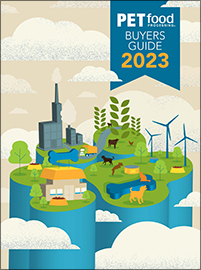MANHTTAN, Kan. — Pet food professionals, formulators and equipment suppliers gathered in Manhattan Aug. 12 for a one-day pet food workshop hosted by Kansas State University’s International Grains Program (IGP). The workshop, which supplemented a four-day short course on extrusion processing, focused on ingredients and formulation for pet food and treats.
Sajid Alavi, Ph.D., professor of grain science and industry at KSU, welcomed attendees and outlined the main goals of the workshop, “to bring folks up to date on the latest trends in pet food, formulating, ingredients, products – especially specialty products – and other aspects like food safety, plant design.”
Setting the stage
Greg Aldrich, Ph.D., research associate professor of grain science and industry at KSU, kicked off the workshop by presenting some overarching industry trends and their implications on the pet food and treat market. Aldrich also runs the pet food program at the university.
“Here in the US, the pet population continues to grow,” Aldrich began. “Currently, they state that about 67% of households in the US own a pet. How many households in the US have a child under the age of 18? Roughly one-third. If we extrapolate, it means that there’s twice as many homes in the US with a pet as there are with children, and I would suggest to you that the pet has become the new child.”

Approximately 70% of the pet food product mix is dry diets, extruded or baked. Aldrich drew attention to the dog treat market as well, which was growing at more than 10% year-over-year in 2013, and the cat treat category with nearly 8% growth during the same period.
In the pet specialty channel, which represents about 25% of the overall retail market for pet food and treats, specialty formulations and premium formats have shown tremendous growth. In 2017, Maria Lange from GfK presented that frozen and grain-free diets had grown most rapidly since 2012, at 235% and 221% respectively, followed by raw alternatives at 196% growth, limited-ingredient diets at 70% growth and products marketed as “natural” with 33% growth.
“What we’re doing here is taking the food from being a standard sort of canned, baked or extruded, and we’re segmenting it out and fragmenting that market into other food forms that consumers are more used to in their own purchases,” Aldrich said.
He continued by outlining some of the leading claims pet food consumers look for, including ingredient and sourcing trends and processing methods, including grain-free, ancestral proteins, superfoods and limited-ingredient formulations.
Aldrich briefly discussed the trend toward grain-free in terms of the US Food and Drug Administration’s ongoing investigation of a suspected link between dilated cardiomyopathy (DCM) and grain-free diets, saying, “It’s a one-in-a-million chance that you have a dog that’s predisposed to dilated cardiomyopathy and we don’t know if there’s a link to diet or not, but it may be a contributing factor, at best.”
Aldrich touched on other “hot topics in nutrition” at the end of his presentation, including food identity and transparency, alternative ingredients such as insect protein and ancient grains, and the rising awareness of the microbiome and how to optimize fiber nutrition and gut health.
Nutritional requirements of macro-ingredients
Next up was Aulus Carciofi, Ph.D., professor in the College of Veterinary & Agrarian Sciences at Sao Paulo State University (UNESP) in Brazil, who spoke about the nutritional requirements and macro-ingredients necessary to formulate a complete-and-balanced pet food diet that can be successfully extruded.
Carciofi reviewed each category of ingredients that appear in large amounts in pet diets, which include the 10 essential amino acids plus taurine for cats to synthesize protein, a handful of fatty acids, a variety of minerals and vitamins, and the two forms of carbohydrates: starches and fibers.
He explained that the nutritional quality of a protein is best measured in three categories: amino acid composition, digestibility, and the bioavailability of the protein, or the overall efficiency of amino acid synthesis.
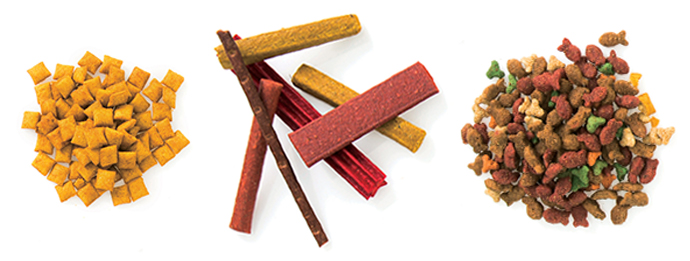
To demonstrate that not all proteins are made equally, Carciofi compared fresh animal proteins to rendered animal proteins, as well as to vegetable proteins and “special” animal proteins such as eggs and whey, based on amino acid composition, digestibility, palatability, extrusion difficulty, energy, minerals and potential issues.
He also covered fats and oils, including the five nutritionally essential fatty acids: Linolenic, a-Linolenic, Arachidonic, Eicosapentaenoic and Docosahexaenoic. Fats and oils can provide energy and palatability, and support vitamin absorption and other structural and metabolic functions in pet diets, Carciofi said.
As for minerals, Carciofi described the specific health and nutritional functions that each essential mineral performs in a dog or cat diet, minimum and maximum limit for those ingredients in pet foods.
He also presented an analysis of mineral content in common pet food ingredients. For example, meats provide low amounts of calcium, but good amounts of phosphorus and magnesium, while most ingredients do not provide sufficient choline amounts and therefore that mineral must be supplemented.
Finally, Carfciofi explained the functions of carbohydrates in pet diets, focusing on the importance of starches and fibers. For dogs and cats, fiber helps control food energy content and also supports gastrointestinal health.
He also pointed out that through the domestication of dogs, the animals have adapted to thrive on a starch-rich diet, unlike their wolf ancestors. Starch also serves as a source of energy and aids processing by providing shape, texture, hardness and density to an extruded kibble. It also improves palatability and intake behavior, he said.
The gelatinization of starch is also a crucial step in the extrusion process to ensure the digestibility of the kibble and absorption of its nutritional value. When choosing a starch for a pet diet, Carciofi suggests processors consider their desired digestive pattern for the food, carbohydrate metabolism, adequate processing challenges, and various health conditions in cats and dogs that could be aided or inflamed by certain starches based on the speed of digestibility.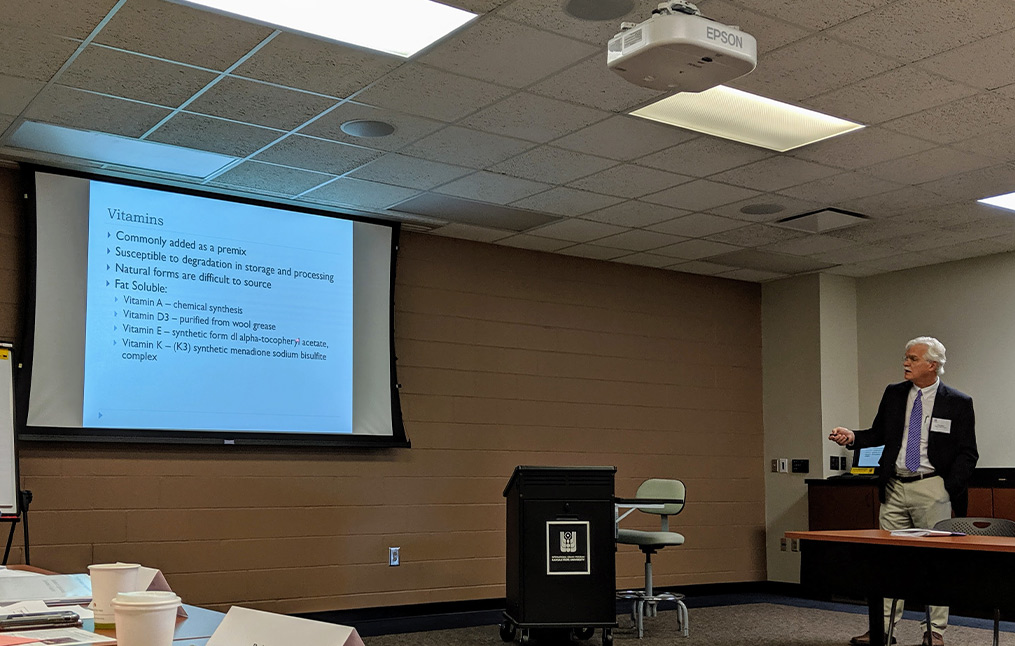
Additives and micro-ingredients
Before breaking for lunch, Aldrich presented on pet food additives and micro-ingredients, focusing more on the smaller components of a pet diet that are nutritionally important.
He went over trace minerals such as iron, copper, zinc, manganese, iodine and selenium, which are usually combined in a premix in either inorganic or chelated forms. Aldrich also discussed the essential vitamins, which are also often added to pet foods as a premix: A, D, E, K, Thiamine, Riboflavin and Pantothenic acid, as well as the relevant subsets of those vitamins.
Aldrich discussed the difference between fat soluble and water soluble vitamins, forms of carriers, processing aids, and vitamin retention variance in terms of dry dog and cat food and canned cat foods.
He provided supplemental information to all participants which went into more depth about other additives, probiotics, chondroitin sulfate and glucosamine, carnitine, B-carotene and lutein in pet diets, as well as non-nutrient additives, such as palatants, colorants, preservatives, humectants, emulsifying agents and anticaking agents.
Palatability and consumer research
Kadri Koppel, Ph.D., associate professor at KSU’s Center for Sensory Analysis and Consumer Behavior, provided an interesting perspective on the sensory experience of pet foods for pets as well as pet owners, and how palatability and aroma is measured and marketed.
Having humans analyze pet foods based on taste and smell seems to be counter-productive, but it is actually the most efficient way to categorize the sensory attributes of a product in a descriptive way, according to Koppel.
“In sensory analysis, you can easily get a better understanding of not only your product, but your competitors’ products,” Koppel said.
Experts in this field develop flavor and aroma lexicons for different types of pet food and base their sensory analyses on characteristics such as “brothy,” “liver,” “barnyard,” or “musty/dusty,” among many others.
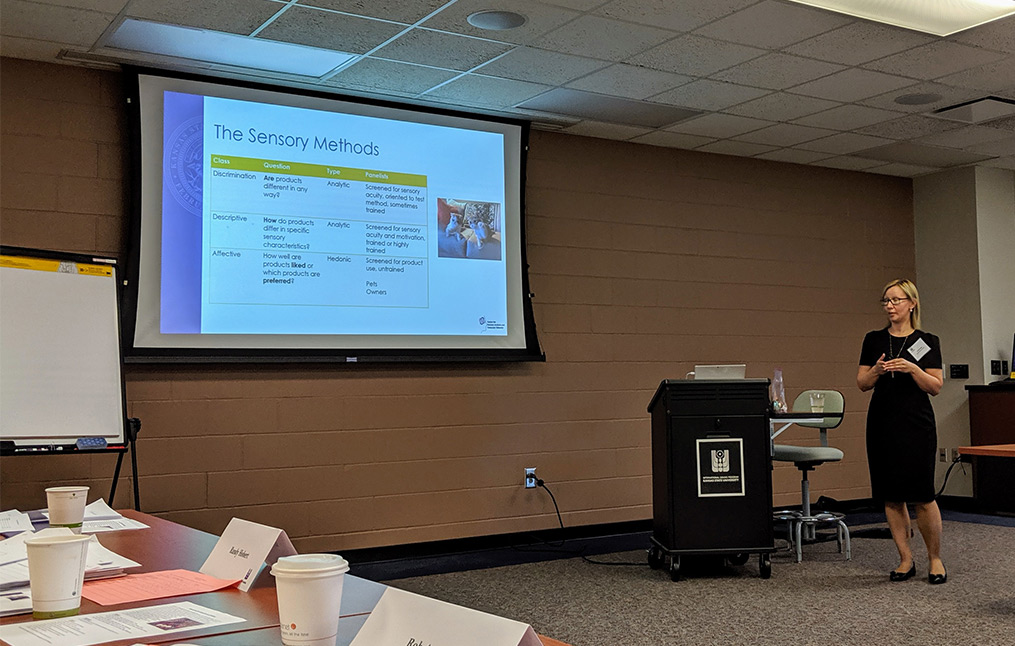
There are also many methods used to conduct sensory analyses with pets, such as the single-bowl, two-bowl and operant lever-press methods. According to Koppel, the single-bowl test is optimal for determining acceptability, while the two-bowl method is used to determine preference. An animal can also communicate preference by sampling or smelling each product, then going back to eat most favorable, then the next most favorable, all the way down to the least favorable.
HACCP and plant layout efficiency
Tim Hartter, project manager at Corporate Project Services, a subsidiary of Wenger Manufacturing, Inc., presented on the importance of plant design and layout, from the exterior surroundings of the facility to the interworking flow of its processes.
He pointed out the effectiveness of hygienic zoning in a pet food manufacturing plant, with clear separation or physical barriers between the pre- and post-cook areas or the dry and wet cleaning zones, as well as considering the flow of air through the facility, to avoid cross-contamination.
Pet food safety and HACCP were also high points in Hartter’s presentation, in which he mentioned how diverter valves, continuous welds, product discharging mechanisms and hygienic equipment design can be utilized to minimize the risk of contamination and streamline sanitation, specifically with extrusion systems.
Hartter touched on environmental monitoring, a food safety trend that has become more and more mainstream in the food processing industry. Environmental monitoring is a way to evaluate all the possible ways cross-contamination can occur at a plant, from direct product contact surfaces to the non-product contact services outside the processing area (i.e. employee break rooms, storage areas).
Specialty pet treats
Last but certainly not least, Galen Rokey, director of process technology for Wenger Manufacturing’s companion animal division, spoke to the group about specialty pet treats and certain trends associated with them.
He began by pointing out the difference between what he calls natural processing technologies and functional processing technologies. Natural processing is defined as “maintaining the food during processing so that its original form is recognizable,” and includes raw and/or frozen pet foods, dehydration, freeze-drying, rawhide products, frozen or refrigerated products, high-pressure pasteurization, and irradiation.
On the other hand, functional processing “alters the appearance of the food from its original form and may offer additional benefits such as textural development resulting from gelatinization,” according to Rokey.
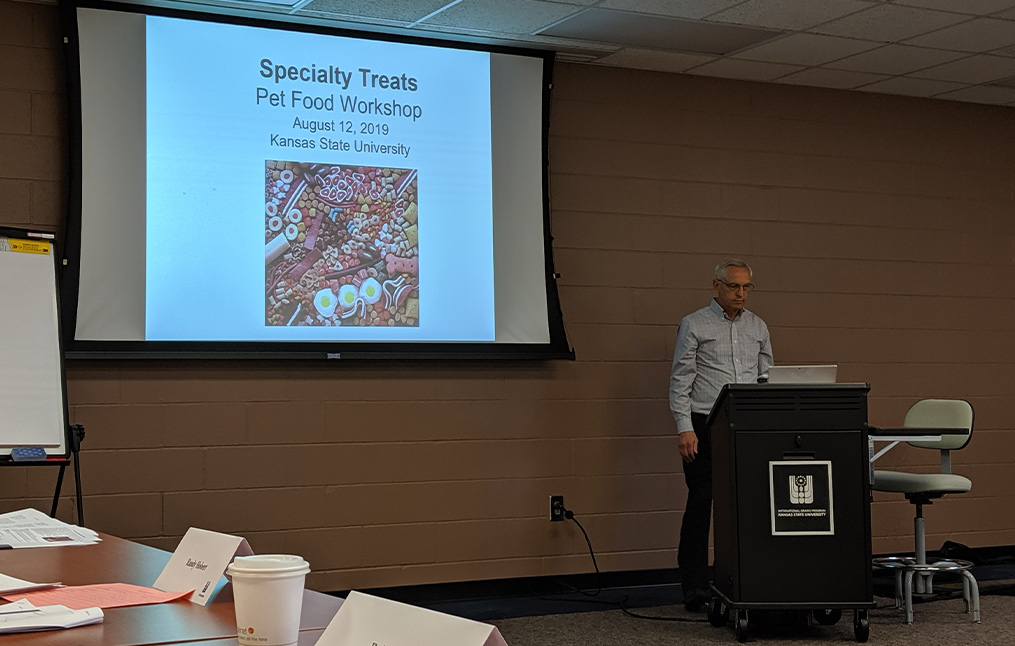
Rokey gave a simplified summary of the extrusion process, explaining the increased starch gelatinization and textural development that occurs, as well as the de-bittering and neutralization of any off-flavors that could negatively impact palatability, and the impact on vitamin stability. “The extrusion process also reduces mycotoxin levels, like aflatoxin, and then pasteurizes the product,” he added.
Rokey also touched on the five main process categories of extruded specialty pet treats: expanded, unexpanded, textured meat and vegetable proteins for retort-stable applications, chews, and co-extruded products. With each come their own processing challenges and specifications, which Rokey summarized during his presentation.
Formulation exercise
To close out the day, Aldrich led participants in an interactive formulation exercise, where we utilized Creative Formulation Concepts, or “Concept 5,” software to formulate an adult dog food based on a nutrient analysis, ingredient list and other criteria that would be prescribed to formulators when developing a new pet food.
“It’s easy to talk about this abstract idea of nutrients or process or the rest of it, but it kind of brings it to life when you actually see how it impacts the formula when you have to put everything in this little box,” Aldrich said.
The IGP Institute at KSU offers this one-day pet food workshop annually in addition to several other pet food, feed, grain and food safety courses throughout the year.
Read more about product development, ingredients and formulation.



